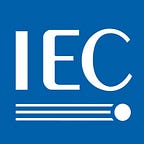Across the globe data centres are consuming an estimated 198 TWh of electricity, which is around one per cent of the total demand. Despite a projected 80% increase in traffic and a 50% increase in workloads by 2021, the total amount of electricity consumed by data centres is expected to decrease over the same period. This is due in large part to international standards promoting energy efficiency best practices.
International Standards reflect the best practices and distilled wisdom of industry, researchers, consumers and regulators worldwide. They remove barriers to world trade, support interoperability, promote reliability and safety, and increase efficiency.
Large server networks are big consumers of electricity and generate a large amount of low-level heat. Not only do they require a lot of energy to function, they also need power to run the cooling and air-conditioning devices which enable them to perform at their best. While the heat generated by computing power can be repurposed and used for domestic heating for instance, routine energy management processes are implemented in the data centres themselves to reduce their overall energy and heat consumption.
While some forecasts predict a decline in the number of server factories, as edge and distributed computing solutions become more widespread in the next five years, most estimates expect total electricity demand for Information Technology to accelerate in the 2020s, partly as a result of the increased power usage of data centres.
“Despite the recent and significant efforts to consolidate server factories, the fact of the matter is that we have more data centres than seven years ago and this number is expected to continue to grow in coming years. And many data centres already consume as much energy as small cities,” says Jan Taylor, who heads international standardization efforts on sustainability for and by IT.
Benchmarking efficiency
Early work focused on a global effectiveness measurement tool for data centres, called power usage effectiveness (PUE). “There were a number of organizations, such as The Green Grid or the Standard Performance Evaluation Corporation (SPEC), which were developing specifications for data centres, but they were all going down different routes.
“That’s how we identified a need for an international standard that could be applied across Asia, Europe and the US,” Taylor explains.
The work on the PUE led a to standard (ISO/IEC 19395) that facilitates the resource monitoring and control of smart data centres. It paves the way for the joint or group monitoring and management of the three different resources used in data centres — IT, electrical power and cooling fluids — which are most often managed separately. Thanks to this standard, each server in the data centre can be assessed according to its computing, energy consumption or dissipation aspects, a more comprehensive and energy-efficient way of managing resources than what was previously available.
“I consider it my job to provide practical and usable tools to be able to assess large energy consumers such as data centres. These tools can be then be used to help reduce our impact on the environment,” Taylor says.
A future without zombie servers
According to Taylor, they are currently working on specifications relating to the energy efficiency of server storage systems. Zombie servers, which suck up power without doing any useful work, can be an aspect of some of the less efficient data centres. Although these energy wasters are more difficult to find in the more recent data factories that use a uniform computing architecture and can scale up to thousands of servers, energy efficiency adjustments can be still made.
“The idea is to look at which servers are idle and to switch them off at certain periods of the day in order to save energy. Algorithms can be used to predict peak usage, when maximum server power is required.
“They can shut servers down remotely in off peak periods. One of the problems we have, however, is that unlike your average PC or laptop, servers are never totally idle, even when they are not actively processing information,” Taylor explains.
The aim is to bridge the gap between the increasing use of computing power and the growing requirements for decarbonization. As Taylor puts it, “We are trying to get equipment to consume less energy while producing useful work which could lead to our overall energy reduction.”
